-
 Bitcoin
Bitcoin $83,602.2353
-2.17% -
 Ethereum
Ethereum $1,577.6270
-3.79% -
 Tether USDt
Tether USDt $0.9999
0.02% -
 XRP
XRP $2.0682
-3.29% -
 BNB
BNB $580.5372
-1.35% -
 Solana
Solana $125.9599
-4.13% -
 USDC
USDC $0.9999
0.01% -
 TRON
TRON $0.2526
0.40% -
 Dogecoin
Dogecoin $0.1542
-3.28% -
 Cardano
Cardano $0.6077
-5.21% -
 UNUS SED LEO
UNUS SED LEO $9.3476
-0.85% -
 Chainlink
Chainlink $12.2682
-3.17% -
 Avalanche
Avalanche $18.8394
-5.46% -
 Stellar
Stellar $0.2340
-2.50% -
 Toncoin
Toncoin $2.8622
-2.26% -
 Shiba Inu
Shiba Inu $0.0...01168
-1.90% -
 Sui
Sui $2.1011
-4.06% -
 Hedera
Hedera $0.1573
-5.64% -
 Bitcoin Cash
Bitcoin Cash $322.1078
-3.54% -
 Litecoin
Litecoin $75.9738
-2.48% -
 Polkadot
Polkadot $3.5448
-3.26% -
 Dai
Dai $1.0000
0.01% -
 Bitget Token
Bitget Token $4.2295
-2.19% -
 Hyperliquid
Hyperliquid $14.9181
-7.99% -
 Ethena USDe
Ethena USDe $0.9991
0.01% -
 Pi
Pi $0.6195
-16.55% -
 Monero
Monero $218.5657
3.31% -
 Uniswap
Uniswap $5.1727
-3.85% -
 OKB
OKB $52.2344
0.01% -
 Pepe
Pepe $0.0...07065
-4.74%
Will USDT be replaced by other stablecoins?
USDT faces challenges from competitors like USDC, BUSD, and DAI due to transparency issues and regulatory scrutiny, potentially shifting market dynamics.
Apr 08, 2025 at 06:28 pm
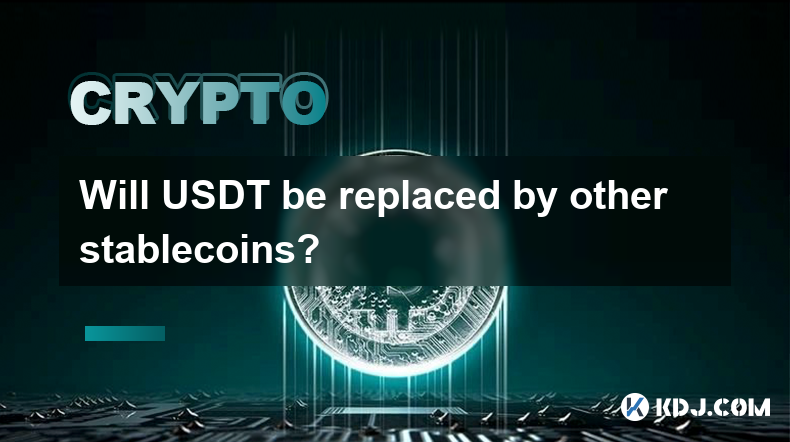
The cryptocurrency market has seen a significant rise in the use of stablecoins, with Tether (USDT) being one of the most popular. However, the question of whether USDT will be replaced by other stablecoins is a topic of much debate within the crypto community. To understand this, we need to delve into the factors that could influence the dominance of USDT and the potential rise of its competitors.
Current Dominance of USDT
USDT, issued by Tether Limited, has long been the leading stablecoin in the cryptocurrency market. It is pegged to the US dollar, offering users a way to move between cryptocurrencies without converting to fiat. The stability and widespread adoption of USDT have made it a staple in trading and as a hedge against volatility. As of now, USDT boasts a significant market cap and is accepted by numerous exchanges and platforms, reinforcing its dominant position.
Challenges Facing USDT
Despite its dominance, USDT has faced several challenges. One major concern is the lack of transparency regarding its reserves. Tether Limited has been criticized for not providing sufficient proof that its USDT tokens are fully backed by USD reserves. This has led to skepticism and regulatory scrutiny. Additionally, legal issues and fines have further tarnished its reputation. These challenges could potentially open the door for other stablecoins to gain traction and challenge USDT's position.
Emerging Competitors
Several stablecoins have emerged as potential competitors to USDT. Among them are USD Coin (USDC), Binance USD (BUSD), and DAI. Each of these stablecoins offers unique features that could appeal to different segments of the market. USDC, for instance, is backed by Circle and Coinbase, offering a more transparent reserve system. BUSD is backed by Binance, one of the largest crypto exchanges, providing strong institutional support. DAI, on the other hand, is a decentralized stablecoin, offering users more control and less reliance on centralized entities.
Advantages of Competitors
The advantages of these competing stablecoins are varied. USDC's transparency and regulatory compliance could attract users who are wary of USDT's reserve issues. BUSD's backing by Binance provides it with a robust platform for growth and adoption. DAI's decentralized nature appeals to those who value the ethos of blockchain technology and seek to avoid centralized control. These advantages could potentially draw users away from USDT and towards these alternatives.
Market Trends and User Preferences
Market trends and user preferences play a crucial role in the potential replacement of USDT. As the crypto market matures, users are increasingly looking for stablecoins that offer not just stability but also transparency, regulatory compliance, and decentralization. The rise of decentralized finance (DeFi) has also increased the demand for stablecoins that can be used within these ecosystems. If these trends continue, stablecoins like DAI could see increased adoption, potentially challenging USDT's dominance.
Regulatory Environment
The regulatory environment is another critical factor that could influence the future of USDT and its competitors. Regulatory bodies around the world are increasingly scrutinizing stablecoins, particularly those like USDT that have faced transparency issues. Stricter regulations could force Tether Limited to improve its practices or face penalties, which could impact its market position. Conversely, stablecoins that are already compliant with regulations, such as USDC, could benefit from a more favorable regulatory environment.
Technological Innovations
Technological innovations in the stablecoin space could also play a role in the potential replacement of USDT. New technologies that enhance the security, scalability, and interoperability of stablecoins could make them more attractive to users. For instance, the development of cross-chain stablecoins could allow users to move their assets more freely between different blockchain networks, potentially increasing the adoption of these new stablecoins over USDT.
Institutional Adoption
Institutional adoption is another key factor to consider. As more institutions enter the crypto market, their preferences for stablecoins could significantly impact the market dynamics. Institutions often prioritize stability, regulatory compliance, and transparency, which could favor stablecoins like USDC over USDT. If institutions begin to favor these alternatives, it could lead to a shift in market dominance.
User Trust and Brand Loyalty
User trust and brand loyalty are crucial in the stablecoin market. USDT has built a strong brand over the years, and many users are loyal to it due to its widespread acceptance and liquidity. However, if trust in USDT continues to erode due to transparency issues and regulatory challenges, users may be more willing to switch to other stablecoins. Building trust and loyalty in new stablecoins will be essential for them to challenge USDT's position.
Market Cap and Liquidity
Market cap and liquidity are important metrics in the stablecoin market. USDT currently enjoys a high market cap and significant liquidity, making it a preferred choice for many traders and investors. However, if competing stablecoins can increase their market cap and liquidity, they could become more attractive alternatives. This would require significant investment and adoption, but it is a possible scenario that could lead to a shift in market dynamics.
Future Scenarios
Several future scenarios could play out regarding the potential replacement of USDT. In one scenario, USDT could continue to dominate the market if it addresses its transparency and regulatory issues effectively. In another scenario, a combination of factors such as increased adoption of competitors, regulatory changes, and technological innovations could lead to a more fragmented stablecoin market, with no single stablecoin dominating. A third scenario could see one or more competitors surpassing USDT in market share and becoming the new leading stablecoin.
Conclusion
The question of whether USDT will be replaced by other stablecoins is complex and depends on various factors. While USDT currently holds a dominant position, challenges such as transparency issues and regulatory scrutiny could open the door for competitors. Stablecoins like USDC, BUSD, and DAI offer unique advantages that could appeal to different segments of the market. Market trends, user preferences, regulatory environments, technological innovations, institutional adoption, and user trust will all play a role in determining the future of USDT and its competitors.
Common Questions and Answers:
What is USDT and why is it popular?
USDT, or Tether, is a stablecoin pegged to the US dollar, designed to provide stability in the volatile crypto market. It is popular due to its widespread acceptance, high liquidity, and use as a trading pair on many exchanges.What are the main challenges facing USDT?
The main challenges facing USDT include a lack of transparency regarding its reserves, regulatory scrutiny, and legal issues. These challenges have led to skepticism among users and could impact its market position.Which stablecoins are potential competitors to USDT?
Potential competitors to USDT include USD Coin (USDC), Binance USD (BUSD), and DAI. Each of these stablecoins offers unique features that could appeal to different segments of the market.What advantages do these competitors have over USDT?
USDC offers transparency and regulatory compliance, BUSD has strong institutional support from Binance, and DAI provides a decentralized alternative. These advantages could attract users away from USDT.How could market trends and user preferences impact the future of USDT?
Market trends and user preferences are shifting towards stablecoins that offer transparency, regulatory compliance, and decentralization. If these trends continue, stablecoins like DAI could see increased adoption, potentially challenging USDT's dominance.What role does the regulatory environment play in the stablecoin market?
The regulatory environment is crucial as it can impact the operations and market position of stablecoins. Stricter regulations could force USDT to improve its practices, while compliant stablecoins like USDC could benefit from a more favorable regulatory environment.How could technological innovations affect the stablecoin market?
Technological innovations could enhance the security, scalability, and interoperability of stablecoins, making them more attractive to users. For instance, cross-chain stablecoins could increase adoption by allowing users to move assets freely between different blockchain networks.What impact could institutional adoption have on the stablecoin market?
Institutional adoption could significantly impact the stablecoin market, as institutions often prioritize stability, regulatory compliance, and transparency. If institutions favor stablecoins like USDC over USDT, it could lead to a shift in market dominance.How important is user trust and brand loyalty in the stablecoin market?
User trust and brand loyalty are crucial in the stablecoin market. USDT has built a strong brand, but if trust erodes due to transparency issues, users may switch to other stablecoins. Building trust and loyalty in new stablecoins is essential for them to challenge USDT's position.What role do market cap and liquidity play in the stablecoin market?
Market cap and liquidity are important metrics in the stablecoin market. USDT currently enjoys high market cap and liquidity, but if competitors can increase these metrics, they could become more attractive alternatives, potentially leading to a shift in market dynamics.
Disclaimer:info@kdj.com
The information provided is not trading advice. kdj.com does not assume any responsibility for any investments made based on the information provided in this article. Cryptocurrencies are highly volatile and it is highly recommended that you invest with caution after thorough research!
If you believe that the content used on this website infringes your copyright, please contact us immediately (info@kdj.com) and we will delete it promptly.
- Avalon Labs Has Launched the Institutional Yield Layer on Bybit Earn, Opening Bitcoin to DeFi
- 2025-04-16 14:25:14
- Chipmaking giants Nvidia and AMD have seen their share prices slide
- 2025-04-16 14:25:14
- ChatGPT-4.5, OpenAI's Latest Innovation, Has Reached a Decisive Milestone by Passing the Turing Test with an Impressive Success Rate of 73%
- 2025-04-16 14:20:12
- Bitcoin (BTC) Price Up 9% Over The Past Week, Targeting $90,000 Resistance
- 2025-04-16 14:20:12
- A crypto game inspired by Monopoly is reportedly on the horizon
- 2025-04-16 14:15:13
- A Stablecoin To Beat Inflation?
- 2025-04-16 14:15:13
Related knowledge
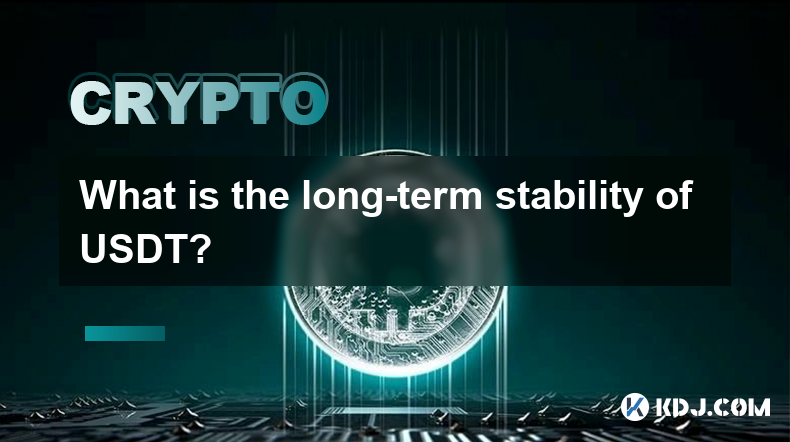
What is the long-term stability of USDT?
Apr 04,2025 at 10:28pm
The long-term stability of USDT, also known as Tether, is a topic of significant interest within the cryptocurrency community. USDT is a type of stablecoin, designed to maintain a stable value by being pegged to a reserve asset, typically the US dollar. The stability of USDT is crucial for its widespread use in trading, as a hedge against volatility, an...

Will USDT be replaced by other stablecoins?
Apr 08,2025 at 06:28pm
The cryptocurrency market has seen a significant rise in the use of stablecoins, with Tether (USDT) being one of the most popular. However, the question of whether USDT will be replaced by other stablecoins is a topic of much debate within the crypto community. To understand this, we need to delve into the factors that could influence the dominance of U...
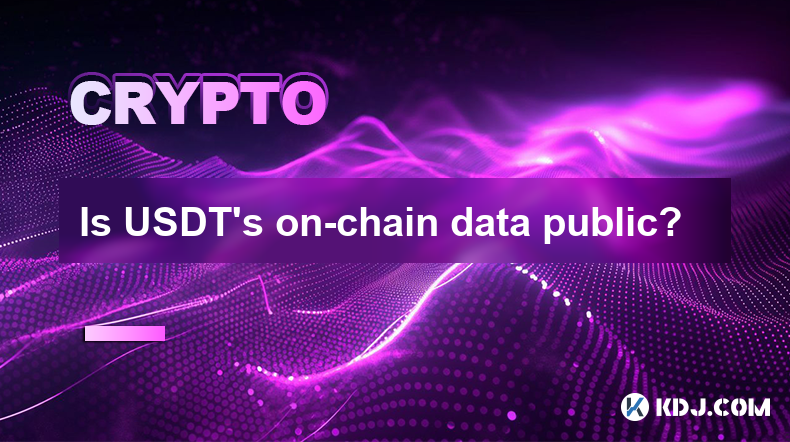
Is USDT's on-chain data public?
Apr 05,2025 at 08:49am
The transparency of USDT's on-chain data is a topic of significant interest within the cryptocurrency community. Tether, the company behind USDT, claims that its operations are transparent and that the on-chain data is publicly accessible. However, understanding the nuances of this data and how to access it can be challenging. This article will delve in...
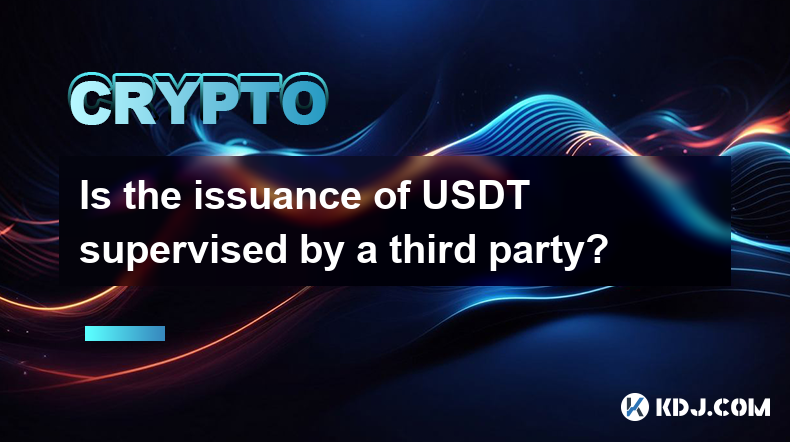
Is the issuance of USDT supervised by a third party?
Apr 06,2025 at 01:49pm
The issuance of USDT, also known as Tether, is a topic that often sparks curiosity and debate within the cryptocurrency community. Many wonder whether this stablecoin, which is pegged to the US dollar, is supervised by a third-party to ensure transparency and accountability. In this article, we will delve into the details of USDT's issuance process and ...
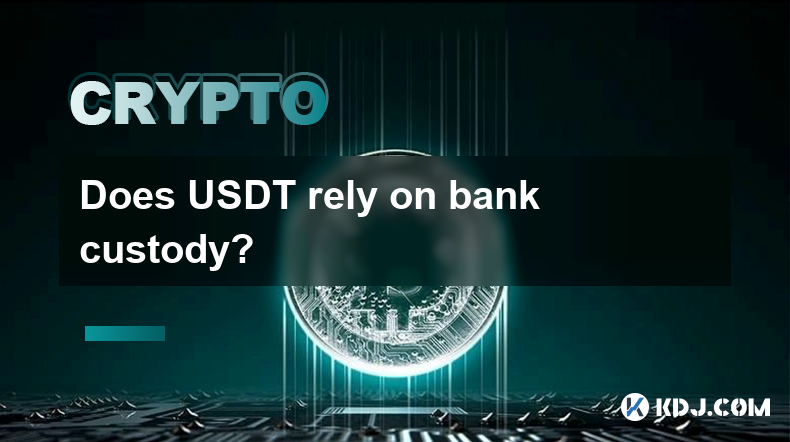
Does USDT rely on bank custody?
Apr 06,2025 at 03:00pm
Tether (USDT) is a widely used stablecoin in the cryptocurrency market, designed to maintain a stable value by pegging it to the US dollar. One of the critical aspects of understanding USDT is its reliance on bank custody. This article will delve into the mechanisms behind USDT's operations, specifically focusing on the role of bank custody in its ecos...
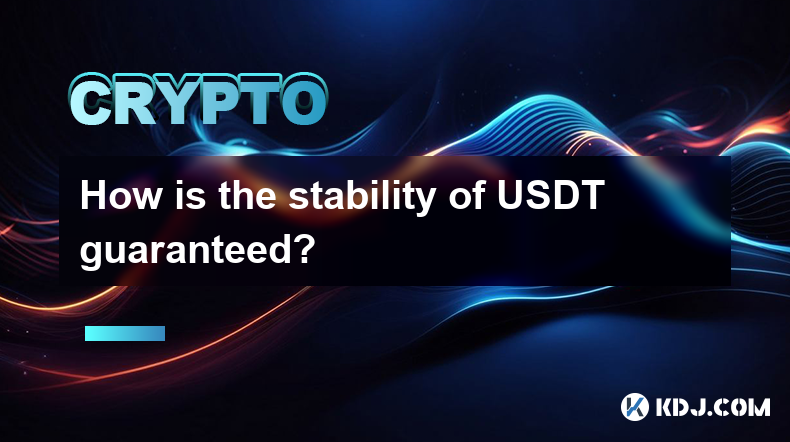
How is the stability of USDT guaranteed?
Apr 03,2025 at 06:00am
The stability of USDT, also known as Tether, is a critical aspect that underpins its role as a stablecoin in the cryptocurrency market. USDT is designed to maintain a 1:1 peg with the US dollar, which is achieved through a combination of mechanisms and practices. Understanding these elements is essential for anyone interested in the stability and reliab...

What is the long-term stability of USDT?
Apr 04,2025 at 10:28pm
The long-term stability of USDT, also known as Tether, is a topic of significant interest within the cryptocurrency community. USDT is a type of stablecoin, designed to maintain a stable value by being pegged to a reserve asset, typically the US dollar. The stability of USDT is crucial for its widespread use in trading, as a hedge against volatility, an...

Will USDT be replaced by other stablecoins?
Apr 08,2025 at 06:28pm
The cryptocurrency market has seen a significant rise in the use of stablecoins, with Tether (USDT) being one of the most popular. However, the question of whether USDT will be replaced by other stablecoins is a topic of much debate within the crypto community. To understand this, we need to delve into the factors that could influence the dominance of U...

Is USDT's on-chain data public?
Apr 05,2025 at 08:49am
The transparency of USDT's on-chain data is a topic of significant interest within the cryptocurrency community. Tether, the company behind USDT, claims that its operations are transparent and that the on-chain data is publicly accessible. However, understanding the nuances of this data and how to access it can be challenging. This article will delve in...

Is the issuance of USDT supervised by a third party?
Apr 06,2025 at 01:49pm
The issuance of USDT, also known as Tether, is a topic that often sparks curiosity and debate within the cryptocurrency community. Many wonder whether this stablecoin, which is pegged to the US dollar, is supervised by a third-party to ensure transparency and accountability. In this article, we will delve into the details of USDT's issuance process and ...

Does USDT rely on bank custody?
Apr 06,2025 at 03:00pm
Tether (USDT) is a widely used stablecoin in the cryptocurrency market, designed to maintain a stable value by pegging it to the US dollar. One of the critical aspects of understanding USDT is its reliance on bank custody. This article will delve into the mechanisms behind USDT's operations, specifically focusing on the role of bank custody in its ecos...

How is the stability of USDT guaranteed?
Apr 03,2025 at 06:00am
The stability of USDT, also known as Tether, is a critical aspect that underpins its role as a stablecoin in the cryptocurrency market. USDT is designed to maintain a 1:1 peg with the US dollar, which is achieved through a combination of mechanisms and practices. Understanding these elements is essential for anyone interested in the stability and reliab...
See all articles























































































